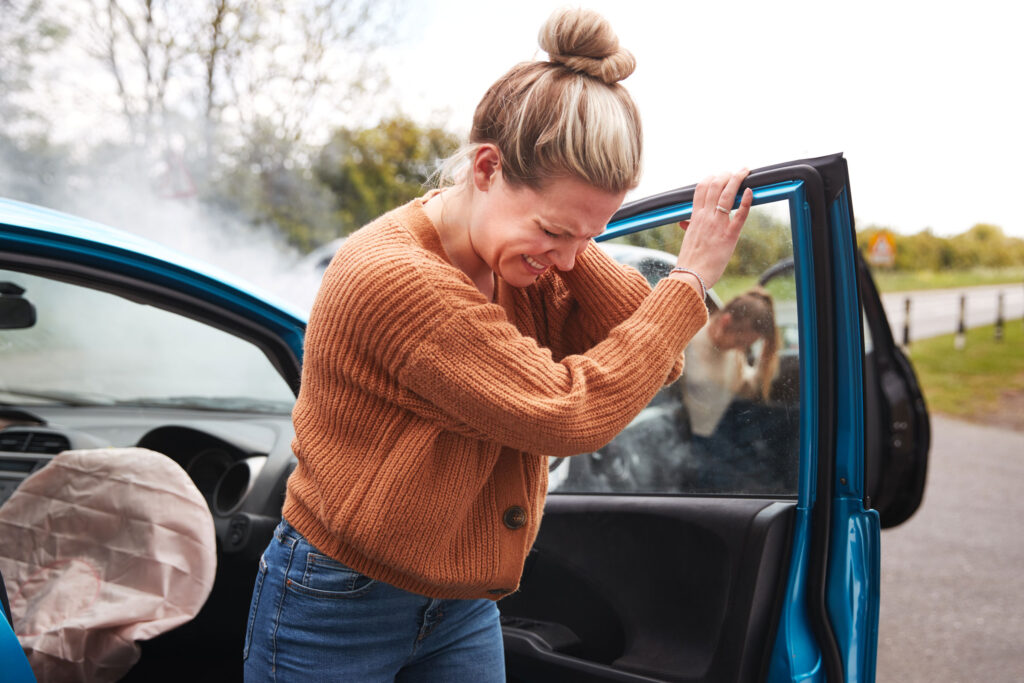In the High Desert area, often times car accidents occur in high-speed areas such as the 15 freeway and major streets between the communities of Hesperia, Victorville and Mojave Desert. When such a vehicle collision occurs, it creates an obstruction which may be difficult for other drivers to avoid.
Vehicles involved in the primary accident often have deployed their safety measures – such as air bags, crumple zones, crash curtains and such. When a third vehicle collides, the vehicles involved in the primary accident are often at rest and the result of force from a third vehicle striking the collision affects with greater force than if all vehicles were moving in the same direction.
According to the National Highway Traffic Safety Administration (NHTSA), secondary accident increases the risk of serious injuries by a factor of 350%. If a secondary accident happens on a high-speed motorway or highway, the results of a multiple-vehicle pile-up can be devastating for all car occupants involved. Moreover, determining liability in a secondary car crash that involves several vehicles can be legally complex and challenging.
For example, in a crash with an initial collision between two vehicles, a third vehicle may not have been able to stop in time while a fourth vehicle could have been distracted and collide with the third car unnecessarily.
Proving negligence in any car accident is crucial to have a chance of recovering compensation for injuries and losses. In a car accident personal injury lawsuit, a victim must prove:
- Duty of care
Motor vehicle drivers generally owe a duty of care to all other road users. All drivers must take reasonable caution to avoid car accidents and injuring others.
- The negligent driver breached the duty of care.
A driver who causes an accident due to distracted driving, or by speeding past an accident scene, most likely breached their duty of care towards other drivers. A victim has to show that a reasonable driver would not have behaved in the same way. Breach of duty can include many acts such as following too closely, driving aggressively, operating a vehicle under the influence of drugs or alcohol, speeding, or failing to yield.
- The car accident happened as a result of the driver’s breach of duty of care.
To have a strong claim and receive compensation for your injuries and losses, a victim must prove that the other driver’s breach of duty and negligent act directly caused their accident, injuries, and property damage. In a complicated secondary car crash, causation can be legally challenging to prove.
- The victim suffered actual injuries or losses.
In order to recover compensation for any injuries and other expenses related to a car accident, a victim needs to prove that they suffered damages in the accident. This can include property damage, medical costs, pain and suffering, lost wages, and other types of damages. The plaintiff will have to provide evidence of damages such as medical statements, car repair receipts, and other applicable documentation.
Merely knowing that the other driver is responsible for an accident and your injuries as well as financial losses is not enough to have a strong personal injury case. You will need to provide clear and compelling evidence that demonstrates the other driver’s negligence. Moreover, there are often several at-fault parties in a secondary car accident claim. Having a knowledgeable car accident attorney by your side can help prove fault in your case.
Learn more about your legal options and ensure they remain protected by contacting an experienced car accident attorney at Harsh Law today at (909) 793-6261 to find out if you could receive compensation for your injuries and losses resulting from a secondary car accident.


